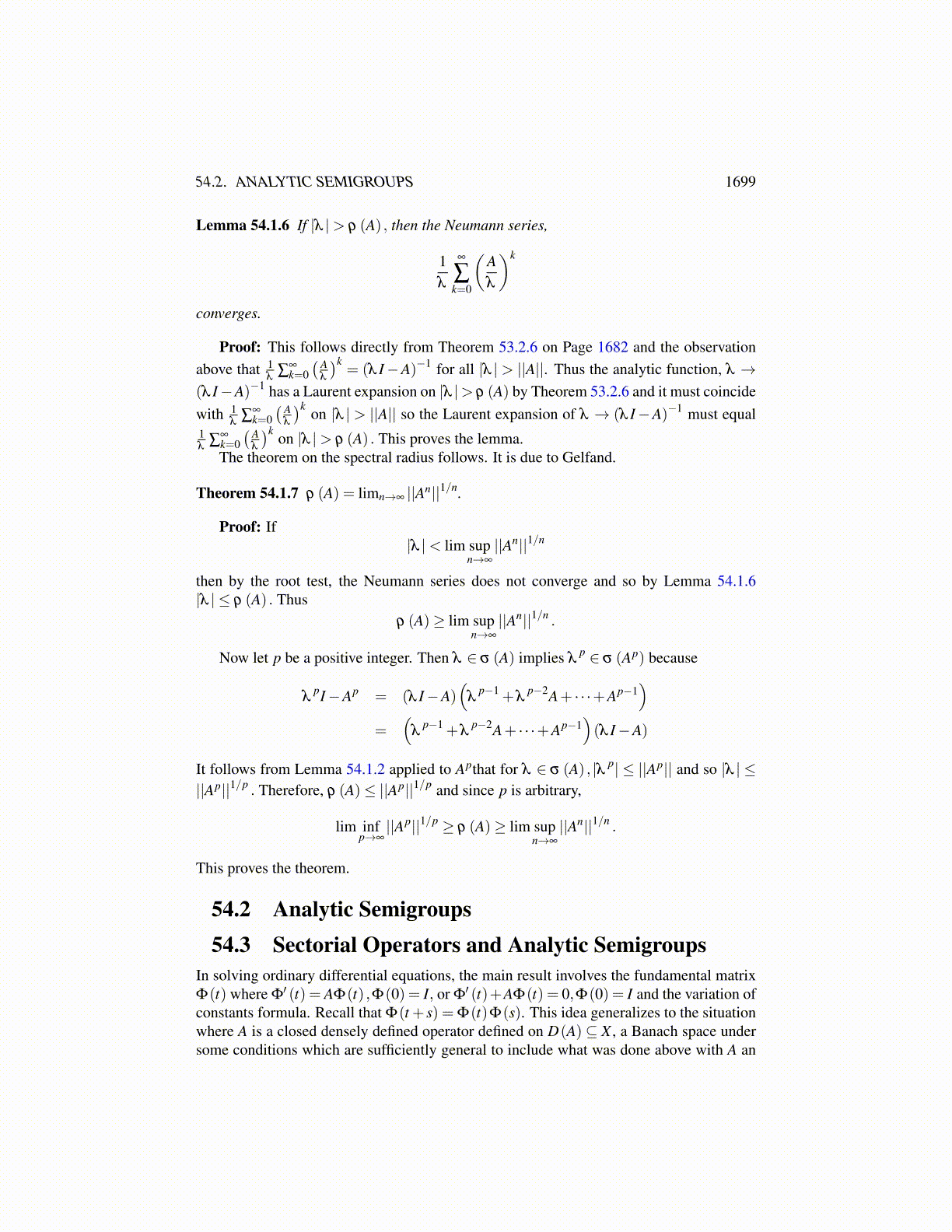
Chapter 54
Functional Analysis Applications54.1 The Spectral Radius
As a very important application of the theory of Laurent series, I will give a short descrip-tion of the spectral radius. This is a fundamental result which must be understood in orderto prove convergence of various important numerical methods such as the Gauss Seidel orJacobi methods.
Definition 54.1.1 Let X be a complex Banach space and let A ∈L (X ,X) . Then
r (A)≡{
λ ∈ C : (λ I−A)−1 ∈L (X ,X)}
This is called the resolvent set. The spectrum of A, denoted by σ (A) is defined as all thecomplex numbers which are not in the resolvent set. Thus
σ (A)≡ C\ r (A)
Lemma 54.1.2 λ ∈ r (A) if and only if λ I−A is one to one and onto X . Also if |λ |> ||A|| ,then λ ∈ σ (A). If the Neumann series,
1λ
∞
∑k=0
(Aλ
)k
converges, then1λ
∞
∑k=0
(Aλ
)k
= (λ I−A)−1 .
Proof: Note that to be in r (A) ,λ I−A must be one to one and map X onto X sinceotherwise, (λ I−A)−1 /∈L (X ,X) .
By the open mapping theorem, if these two algebraic conditions hold, then (λ I−A)−1
is continuous and so this proves the first part of the lemma. Now suppose |λ | > ||A|| .Consider the Neumann series
1λ
∞
∑k=0
(Aλ
)k
.
By the root test, Theorem 51.1.3 on Page 1613 this series converges to an element ofL (X ,X) denoted here by B. Now suppose the series converges. Letting Bn≡ 1
λ∑
nk=0( A
λ
)k,
(λ I−A)Bn = Bn (λ I−A) =n
∑k=0
(Aλ
)k
−n
∑k=0
(Aλ
)k+1
= I−(
Aλ
)n+1
→ I
1699